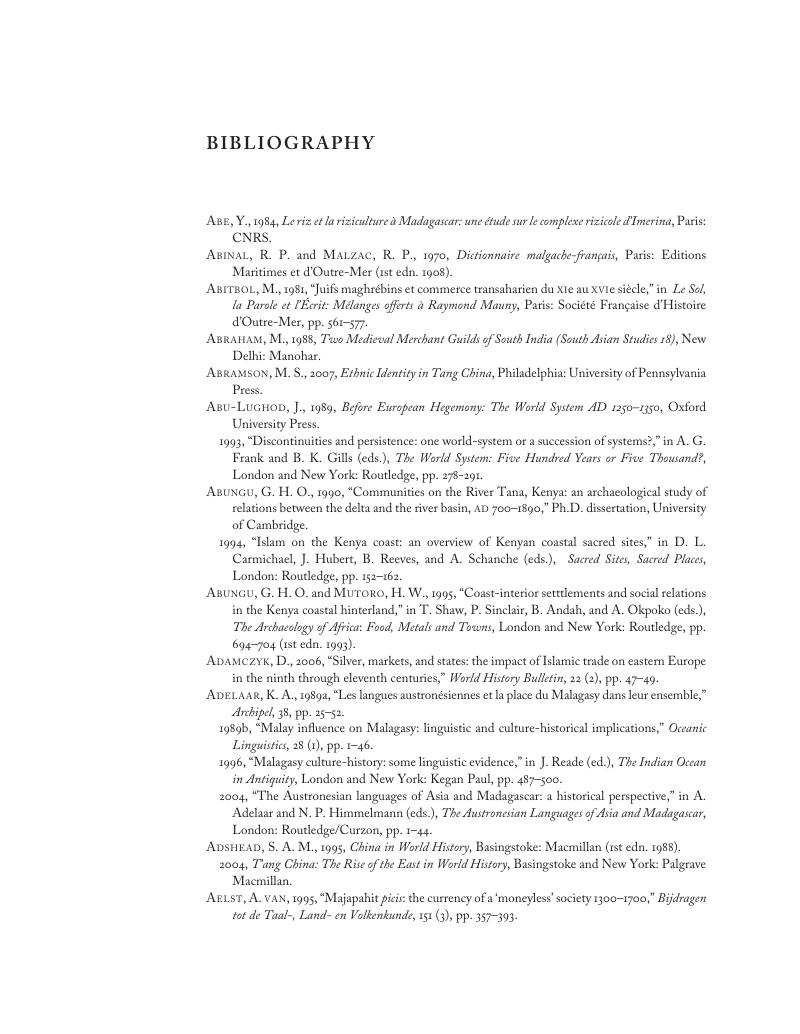Book contents
- The Worlds of the Indian Ocean
- The Worlds of the Indian Ocean
- The Worlds of the Indian Ocean
- Copyright page
- Dedication
- Contents
- Maps and Charts (in Color Plates)
- Illustrations (in Color Plates)
- Figures
- Tables
- Abbreviations
- Part I The Indian Ocean between Tang China and the Muslim Empire (Seventh–Tenth Century)
- Part II Globalization during the Song and Mongol Periods (Tenth–Fourteenth Century), and the Downturn of the Fourteenth Century
- Part III From the Globalization of the Afro-Eurasian Area to the Dawn of European Expansion (Fifteenth and Early Sixteenth Centuries)
- Bibliography
- Index of Geographical Names
- Name Index
- Subject Index
- References
Bibliography
Published online by Cambridge University Press: 14 October 2019
- The Worlds of the Indian Ocean
- The Worlds of the Indian Ocean
- The Worlds of the Indian Ocean
- Copyright page
- Dedication
- Contents
- Maps and Charts (in Color Plates)
- Illustrations (in Color Plates)
- Figures
- Tables
- Abbreviations
- Part I The Indian Ocean between Tang China and the Muslim Empire (Seventh–Tenth Century)
- Part II Globalization during the Song and Mongol Periods (Tenth–Fourteenth Century), and the Downturn of the Fourteenth Century
- Part III From the Globalization of the Afro-Eurasian Area to the Dawn of European Expansion (Fifteenth and Early Sixteenth Centuries)
- Bibliography
- Index of Geographical Names
- Name Index
- Subject Index
- References
Summary

- Type
- Chapter
- Information
- The Worlds of the Indian OceanA Global History, pp. 692 - 772Publisher: Cambridge University PressPrint publication year: 2019



